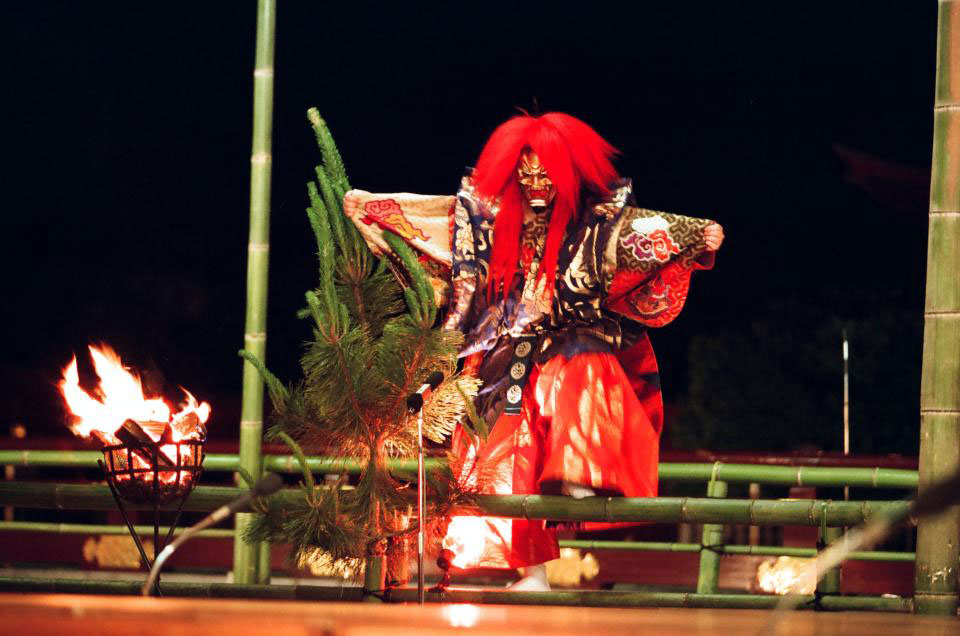
The Kyoto Takigi Noh, beloved as an early summer tradition, will be held today. Started in 1950 through the co-sponsorship of Kyoto City and the Kyoto Nohgaku Association, it is a graceful June event in Kyoto, nestled between the Aoi Festival in May and the Gion Festival in July. As dusk falls over Higashiyama and the bonfires are lit, the vermilion-painted shrine buildings of Heian Shrine are illuminated, and the specially constructed Noh stage stands out clearly, enveloping the surroundings in a solemn atmosphere. Spectators can enjoy performances of Noh and Kyogen from the Kanze, Hosho, Kongo, Komparu, and Okura schools. Every year, many visitors from both inside and outside Japan come to Kyoto to immerse themselves in the world of Yugen (mysterious beauty).
The origin of Takigi Noh dates back to the Takigi Sarugaku (Takigi Onou) held as part of the Shunie at the Saidaiji Temple in Nara. Initially, it was a ritual offering firewood to the deities, but over time it became more elaborate and unique Takigi Noh performances spread across Japan, peaking during the Edo period. Although its popularity waned during the Meiji era, the charm of Takigi Noh has been reappreciated, and now it is held at various shrine precincts, gardens, and castle ruins throughout the country.
初夏の風物詩として親しまれている京都薪能が今日開催されます。 5月の葵祭と7月の祇園祭に挟まれる6月の京の雅な催事として、昭和25年に京都市と京都能楽会の共催で始まりました。 東山に夕闇が迫り篝火がたかれ始めると、平安神宮の朱塗りの社殿がライトアップされ、特設の能舞台がくっきりと現れ、荘厳な雰囲気が辺りを包みます。観世・宝生・金剛・金春・大蔵の各流派による能や狂言が楽しめるという豪華なもので、例年京都はもとより国内外からも多くの観客が来場し、幽玄の世界に酔いしれます。
薪能の起源は、奈良興福寺西金堂で催される修二会(しゅにえ)において、その行事の一環として始められた薪猿楽(薪御能、たきぎおのう)です。本来は神仏に薪をお供えする儀式でしたが、次第に華やかになり、日本各地で特色のある薪能が催され江戸時代に最盛期を迎えました。明治時代以降いったん下火になりましたが、薪能の魅力が再認識され、今では全国各地の社寺境内や御苑、城跡などで催されるようになっています。
